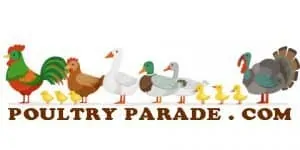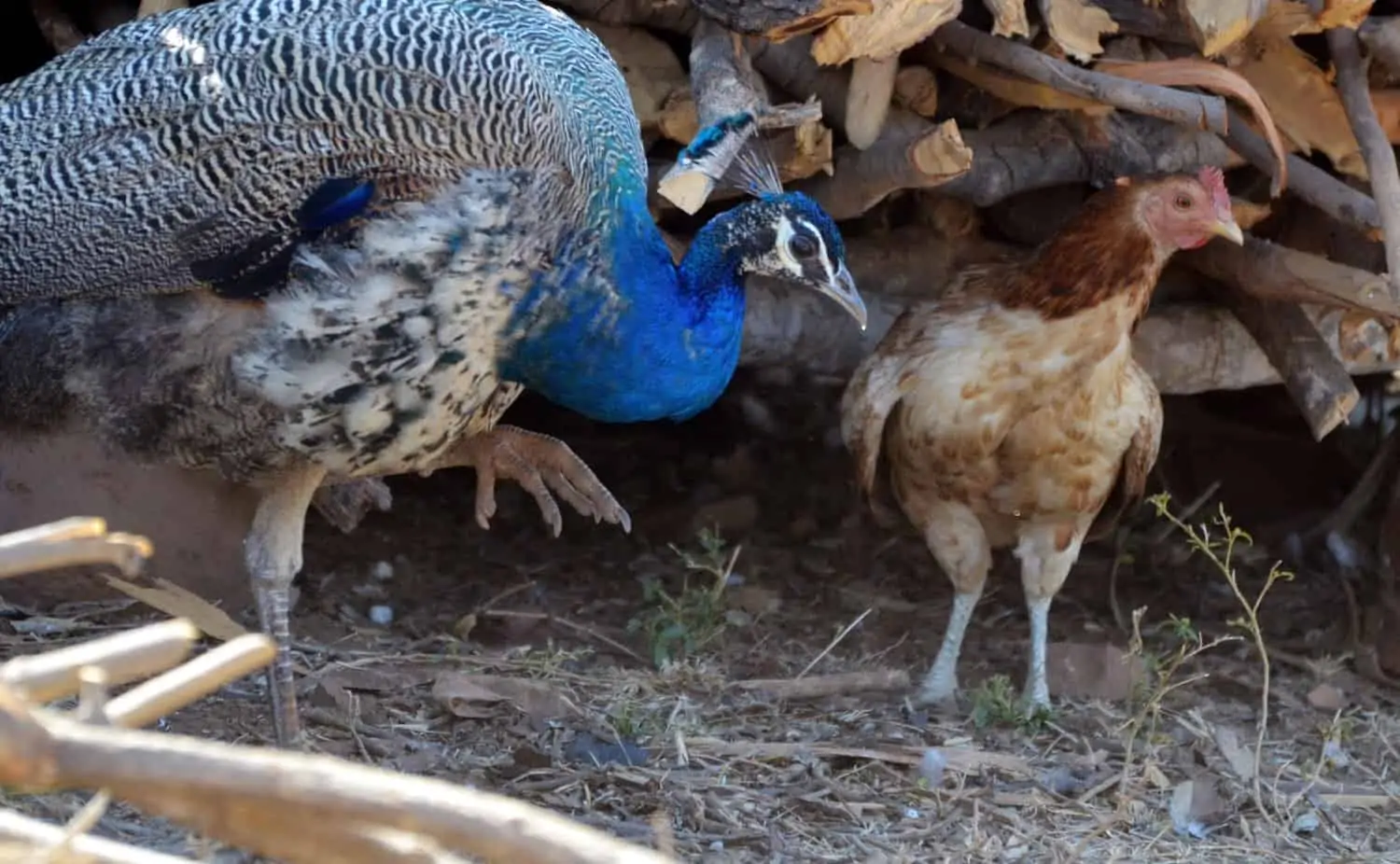Peafowl are beautiful creatures with a lot to offer – their feathers provide interesting materials for clothing or home décor, they brighten up any property, and they are quite intelligent birds.
But peafowl are not only beautiful creatures; they also have a lot of specific needs that must be met if they are to be happy in their home environment. It is important that anyone interested in the keeping of peacocks or peahens learn as much about them as possible so that proper care can be provided
In this article, we’ll go over all of the necessary information you need if you’re interested in keeping peacocks or peahens: How do you take care of peafowl after purchase? What kind of environment should they have, how should their housing be arranged, keep them healthy, etc.? All these questions and more will be answered below.
But first, let’s get the terminology out of the way. The term “peacock” is often used to refer to both peacocks and peahens, regardless of whether the animal one is referring to is a male or female. However, males are called “peacocks,” and females are called “peahens.” This is how we will refer to them in this post.
Table of Contents
Why Should You Raise Peafowl?
I will never forget the first time I saw a peacock. I was on a farm visit with my parents, and the farmer had one in a large pen. Overwhelmed with how impressive it looked, I stared at it for several minutes before deciding that I would one day own peafowl. That was decades ago, and I have since been fortunate enough to care for several of these noble birds.
When you raise them properly, they can make excellent pets. They are lovely birds that will add a splash of color to any home or garden. Peafowl are not only beautiful birds that provide entertainment, but their feathers can also be sold or used for things like decorations and other creative endeavors. The males tend to be the ones who really shine; they have beautiful ornate plumage on them that is sure to impress anyone looking at it.
However, they are not for everyone. If you are considering getting peafowl, there are a few things that you should know beforehand: They are not great for meat or egg production. Not that the meat is not delicious (I have heard), but they grow relatively slowly, eat a lot, and take up much more space than, say, broiler chickens.
Peahens lay almost no eggs for the first three years, and after that, they only lay about nine eggs per year. Incubating the eggs is difficult as well. The eggs tend to be less fertile than those of other birds, and they often do not hatch when incubated at home. On top of that, they are also quite susceptible to disease.
As mentioned, peafowl also require a lot of room. They need a reasonably large plot of land or a big enclosure and lots of room to move around. They are also quite big birds that can get aggressive, so if you have small kids, this may not be the right pet for your family.
These are all reasons to reconsider getting peafowl, but perhaps the most important consideration is how they affect the community you live in. Peafowl tend to be noisy, and once they get going, it is hard to make them stop. Personally, I enjoy their call, but not everybody does – at least not in the long run. Unless you live on a remote farm or a place where your neighbors won’t mind the noise, this bird probably could make you unpopular with your neighbors.
I’m not trying to discourage you from getting peafowl; I just want to make sure you are aware of the potential downsides. They are for show (and what a show!), somewhat demanding to keep, and you are not likely to make a profit unless you breed the birds and sell them. On the other hand, given how beautiful they are and how fun it can be to raise them, many people still think that they are well worth it. And if you don’t mind the downsides mentioned above, they can provide a lifetime of enjoyment.
Is it Easy to Keep Peafowl?
Peafowl may seem like a luxury pet, but they can actually be relatively easy to take care of if you keep them in the right conditions. They do require shelter and food, but if you provide them with what they need and look out for health issues, they should be just fine.
Note that the young chicks are much harder to raise than chickens or ducks. Peachicks are very vulnerable to stress, diseases, or other health concerns such as injuries. I highly suggest doing your research and having some experience with adult peafowl before getting chicks, so you know how to ensure their proper health.
Is It Legal to Keep a Peacock as a Pet?
It is legal to own peacocks. Many cities and homeowner associations, however, do have restrictions on what animals you can own.
Some local governments do not allow people to own peafowl; other places have livestock limits for how many poultry or other types of animals that you can keep on your property. So if you live in an area where there are strict laws about how many animals you can keep, you may be out of luck. Of course, you can always try to apply for an exemption, but this often means a difficult process that not everyone is willing to go through.
Getting Your First Peafowl
How Many Peafowl Should I Start With?
Peafowl are very social animals and prefer to be with others of their own kind. If you only have one peacock, he will be very lonely and unhappy. If they are alone in their pen, they will get bored and start behaving in an undesirable way, such as pacing back and forth or attacking other animals.
At a minimum, have two birds, such as a male and a female or two males. If you have more than one male, I suggest you have at least one peahen per peacock. The males tend to fight very violently over the females during the breed season, so either keep only one male or ensure they have a lot of space.
As a beginner peafowl keeper, I suggest you purchase a male and female couple to start with. That way, you can learn how to care for them and become familiar with their needs and how they behave in general.
Peafowl can bond very strongly with their owners if you put in the right effort, and they can become very friendly. You can pet them, talk to them, and possibly even teach them how to do some simple tricks.
After you’ve gained some experience, you can always decide how many more birds you want to have. Remember that peafowl can live for a long time. According to Cosley Zoo they live up to 20 years, but I have also heard of them living even longer, so plan accordingly.
Where Can I get Peafowl?
There are many places you can purchase peafowl from. Local breeders or backyard hatcheries would be your best choice for finding reasonably priced peafowl that have been socialized by people.
There are also several online hatcheries – just make sure you choose one with a good reputation. Buying your bird(s) from an established hatchery is likely to cost a bit more than from a backyard breeder or hatchery, but you’ll know that you’re getting your bird from an experienced breeder.
Peafowl Breeds and Their Characteristics
There are three types of peafowl. Technically, they are distinct species (not breeds), but colloquially they are called breeds as they can interbreed. These three breeds are the Blue or Indian Peafowl, the Green Peafowl, and the Congo peafowl.
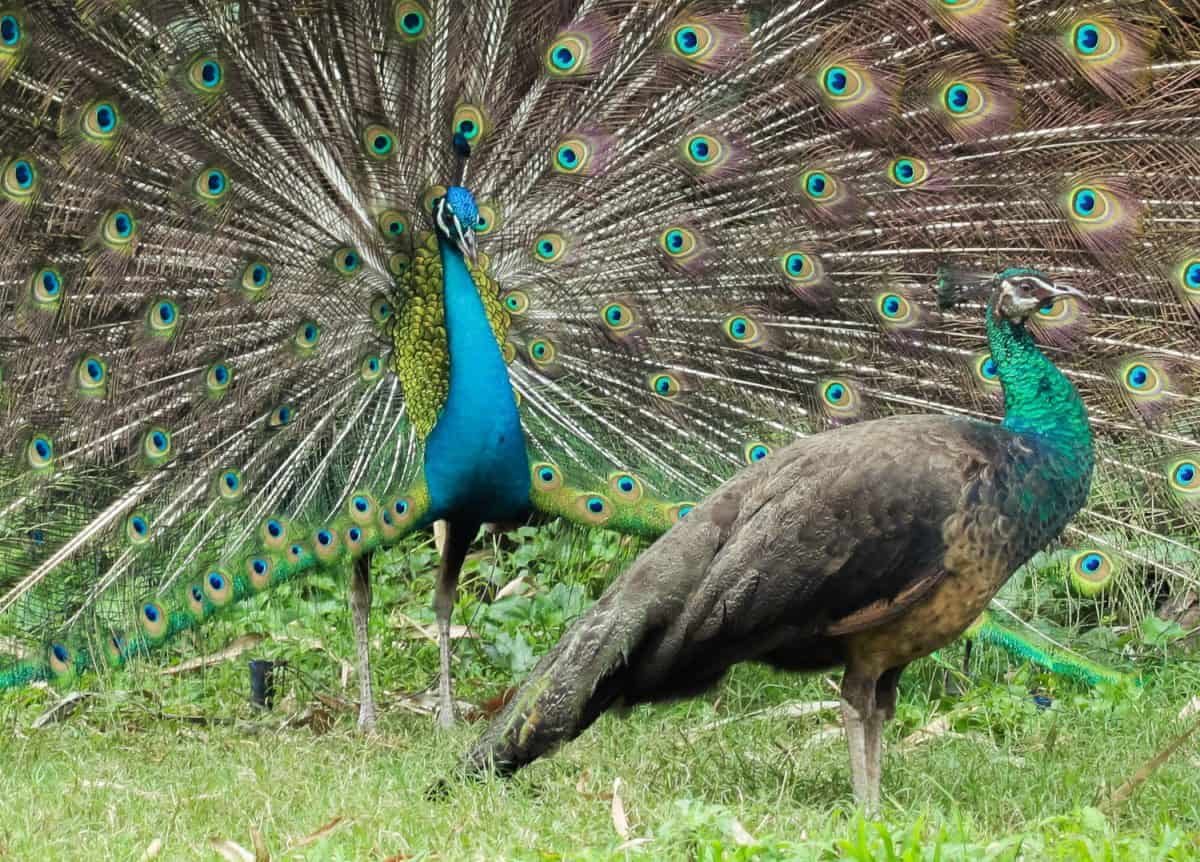
The Indian Peafowl is perhaps what most people think of when they think about peacocks. They are the ones with the characteristic blue neck and head and huge display of feathers – gorgeous iridescent blue, green, and yellow plumage with hundreds of eyespots that is so stunning to observe.
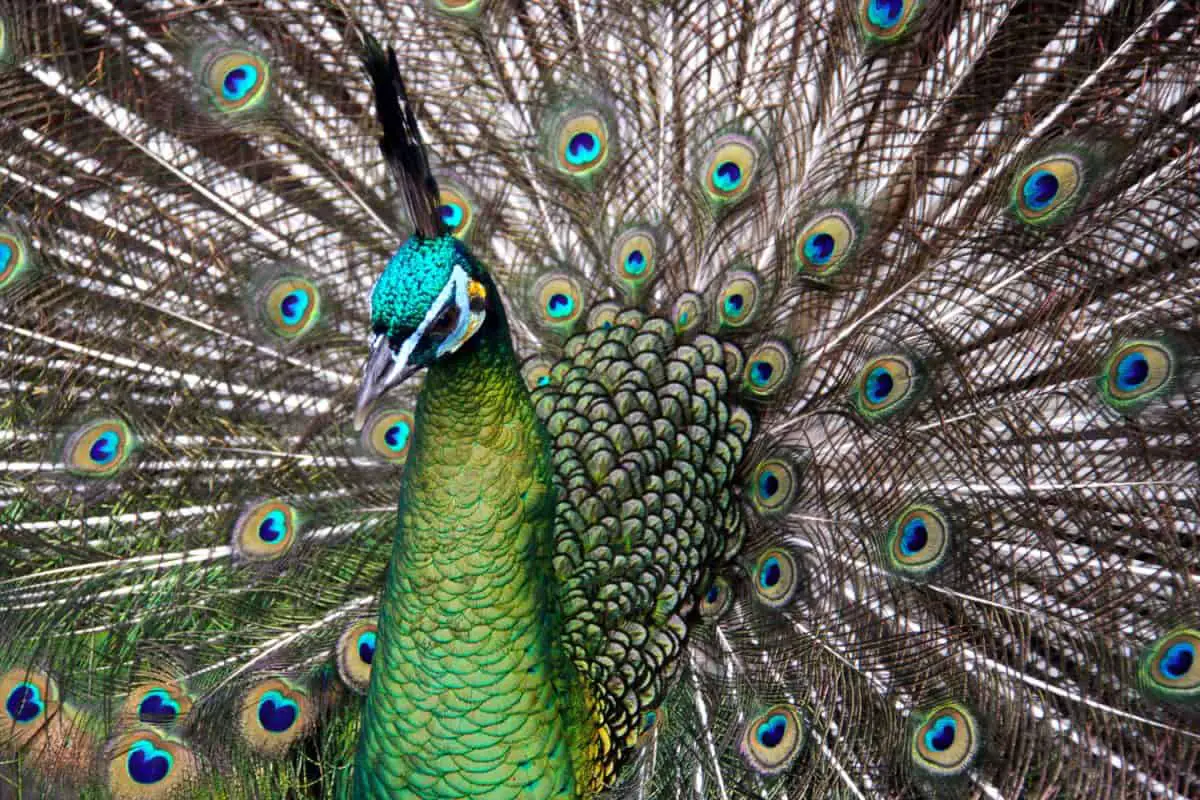
The Green Peafowl is very similar to its Indian cousin but with a green neck and more colorful flight feathers. The females are also much more brightly colored than Indian peahens. In many ways, the peahen appears to be a peacock that is missing its long train feathers.
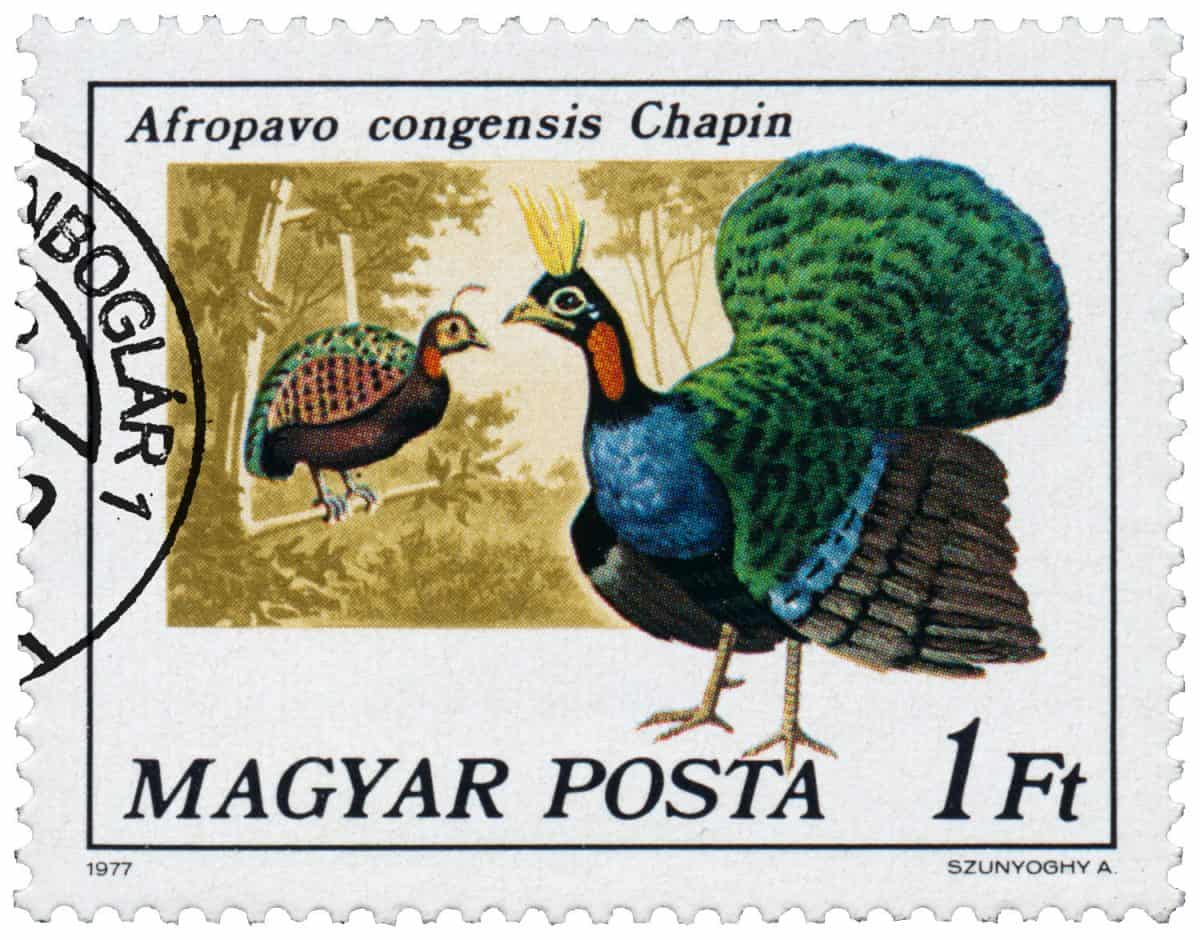
The Congo Peafowl is the smallest of the three species, with green and blue feathers on its neck and back (but not as impressive as the Indian or Green). The males have a shorter lyre-shaped tail that does not display as other peacocks do. I have heard this breed described as a flashy turkey. The Congo peafowl is threatened in the wild and mostly kept in zoos. You are unlikely to find them for sale, and I’m not even sure they are legal to keep without dispensation.
How Do You Keep Peafowl?
Peafowl are beautiful but also somewhat challenging to care for. In this section, I’ll go through the steps you can take to keep your peafowl healthy and happy. I’ll cover topics like how much space they need, what kind of food they eat, keeping them healthy, and more. By following these recommendations, you will be able to enjoy your birds without getting stressed out.
How to Free-range Peafowl
There are two ways how you can house your peafowl: free-ranging and in an enclosed aviary.
If you let your peafowl free-range, you will need to make sure that they have enough space to roam without bothering your neighbors. Free-ranging works well if you live on a sizable plot of land. However, they will generally not range too far from their food source, so you can have some control over how far they go by where you feed them.
Can Peafowl Fly Away?
Peafowl are quite good at flight, and they are more likely to fly away compared to other flying poultry, like pigeons, but it is not impossible to keep them at home as long as they feel safe and have the right environment. It is much easier to teach young peafowl to stay home. I have heard of people successfully training mature peafowl to stay on their property. Still, for every success, there are several stories about how the owner wasn’t able to relocate older peafowl without keeping them confined.
Before you let your new birds loose, they need to learn where their home is. Keep them in a confined area for two months so that they get used to their home and surroundings. Then let them out in the morning and put them back at night – make sure you don’t keep them out all day as they need to be able to sleep somewhere secure.
You can also clip their flight feathers the same way people clip their chicken’s wings to prevent them from flying over fences. This is painless and can be used in the beginning, but it also makes them much more vulnerable to predators. If you do clip their wings, make extra sure to keep them indoors or in pen in the nighttime.
Check out this comprehensive article on how to keep your peafowl from flying away.
How Do You Keep Peafowl Safe at Night?
You want to make sure that your peafowl stay safe at night. The adult birds are large birds, and you don’t have to worry about smaller predators. However, larger predators like coyotes and raccoons can hurt them – especially if they are in a confined space. Free-ranging birds need tall trees where they can roost or a safe home at night where they can’t be attacked.
Keeping Peafowl in an Aviary
If you would like more control over how your birds move around the property or how exposed they are to predators, consider housing them in an aviary. The aviary should be at least 10 feet wide by 6 feet tall so the male can strut around freely while showing off all his feathers. The peacock’s gorgeous and large tails are the key to a successful mating process.
A good size aviary would be 100 square feet per individual bird; this will allow sufficient room for each animal within the enclosure without overcrowding or fighting over feeding stations. Being large birds, they are reasonably easy to contain, but you will need a mesh roof over their aviary and solid mesh walls. This is partly to keep your birds in but also to keep predators out.
Be sure to build a fence that your peafowl can’t stick their head through and potentially injure themselves or be attacked by predators. Here is a great video showing how to build a fence for your peafowl.
Peafowls also need trees and branches to roost on. They prefer to sit up high where they can look out over the surrounding area. You can provide them with solid branches in your enclosure or hang boards from the top of your aviary.
Do Peafowl Need a House?
Peafowl kept in an aviary do not need a house with four walls, but they do need access to draft-free cover, so it’s highly advised to build a shelter for them. This will ensure that they can stay dry and escape strong winds. Most aviaries are partly covered by a metal or wooden roof and walls.
If your birds are free-ranging, it depends on whether there is natural cover or not. If there are lots of trees and bushes, they may be able to find shelter, but make sure there is some sort of dry structure with a few perches for when the weather gets really bad. This will also keep them from leaving your property while looking for a dry place to sleep.
If you live in a very cold climate, they may also need heated housing in the winter.
How to Feed and Water Peafowl
To keep your peafowl healthy, they require the right diet. Their feathers need a lot of protein, and the birds themselves eat a lot of food. Most people don’t know that peafowl have special dietary needs, so they end up buying chicken feed which has too much calcium and too little protein.
Instead, you should buy feed for pheasant, turkeys, and other game birds that is specifically designed to give birds like peafowl the nutrients they need. Mix in grain and dried insects or mealworms for extra protein.
Peafowl also need lots of greens. Grasses such as dandelion, clover, alfalfa, turnip greens, and chickweed are all good choices. Not only will these provide some vitamins that they might not get from their regular feed, but it will also allow them to forage for their food. It is very important that they have these opportunities because it gives them something to do and provides valuable exercise.
Peafowl are omnivores and would generally eat most of your kitchen scraps like chickens do. But as they are much more suspectable to diseases than chickens, be very careful what you feed them.
Peafowl drink a lot of water because they are very active, so make sure they always have clean water available. Depending on how dry the climate is where you keep your peafowl, you may need to provide them with fresh water at least once a day. You can use a bowl or a poultry waterer and ensure it is kept clean to avoid bacterial and algae growth.
Diseases and Parasites
Peafowl are more susceptible to disease and parasites than most other poultry and therefore require extra precaution. Make sure that their environment is as sanitary as possible by removing droppings (especially from wild birds) and use poultry feeders where food is less likely to become contaminated. They should also be separated from wild birds and (preferably) domesticated chickens to help prevent the spread of diseases.
Avoid overcrowding your aviary or yard with too many animals – this will increase the risk of disease spreading among your birds. Some common viral diseases include Newcastle Disease, Fowl Pox, Mycoplasma gallisepticum, and a whole host of parasites and bacterial infections.
Peafowl need regular checkups to ensure that they are not sick and there is no need for medical intervention. Check their feathers, eyes, body, and overall appearance for signs of disease. Parasite control should also be included as part of their regular care. Contact a vet before administering any medications or treatments to your birds, so they can advise how best to administer them.
If you experience an outbreak of disease in your flock, it is important that you isolate the sick animals and keep them away from the healthy ones, as well as from domestic fowl and other wild birds (if you have both). Disease spreads very quickly and will quickly wipe out your peafowl if you are not careful how you handle them.
In Summary
Peafowl are a beautiful addition to your farm or homestead, but they require more attention and care than chickens or ducks. Before you get peafowl, be sure to make the commitment. They’re not for everyone, and they do require more attention than chickens or ducks.
But if you are committed to providing them with a healthy environment, then this exotic bird can bring a type of beauty and charm into your life that’s hard to find anywhere else. I hope this article has given you some food for thought about whether bluebirds might be an appropriate addition to your new farming adventure.
